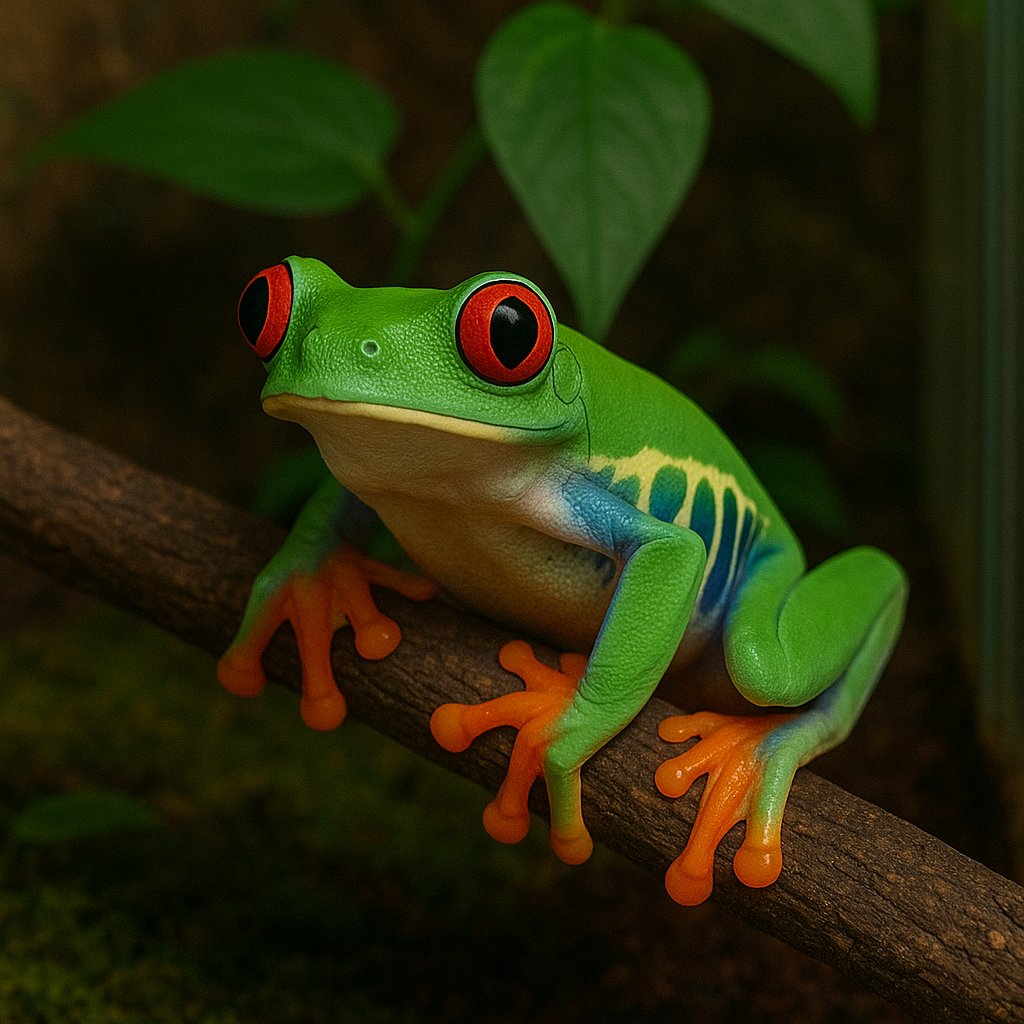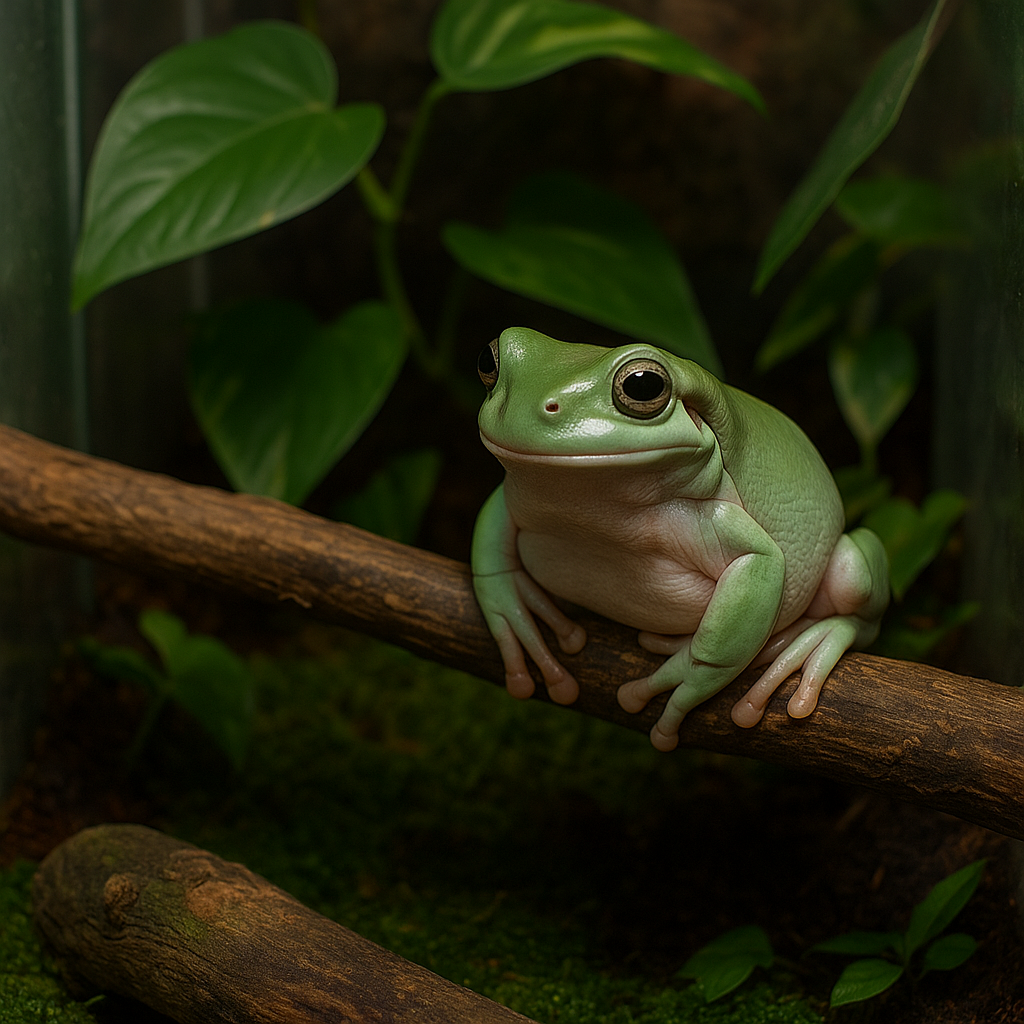Microfauna are the unsung heroes of every successful bioactive dart frog setup. These tiny invertebrates clean waste, break down organic matter, aerate substrate, and even serve as supplemental frog food. This guide explores the best microfauna species for UK keepers, how to introduce and maintain them, and what to avoid.
What is Microfauna?
Microfauna are microscopic or tiny soil-dwelling organisms, especially detritivores (waste-eaters) that form the clean-up crew in vivariums. In dart frog enclosures, this typically includes:
- Springtails (Collembola)
- Isopods (terrestrial crustaceans)
- Nematodes and other micro-invertebrates
They form the foundation of the bioactive ecosystem.
Springtails: The First Line of Defence
- Eat mould, decaying plant matter, leftover food
- Thrive in moist, high-humidity environments
- Stay small and do not overpopulate
- Reproduce rapidly and are safe for all dart frog species
Use our 3D Printed Springtail Collection Riser to harvest them cleanly from cultures.
Recommended species:
- Folsomia candida (White springtails) – ideal for soil
- Tropical pink springtails – more heat-tolerant, visually distinct
Feed sparingly with yeast, brewers’ yeast, or rice flour.
Isopods: The Heavier Clean-up Crew
Isopods are excellent detritivores and aerators, but not all are frog-safe.
| Species | Safe for Frogs? | Notes |
|---|---|---|
| Trichorhina tomentosa (Dwarf White) | ✅ | Soft-bodied, burrow well |
| Armadillidium vulgare | ⚠️ | Large, may compete for food |
| Porcellio laevis | ❌ | Avoid in frog tanks; may disturb eggs |
| Dairy Cow isopods | ✅ | Visible and active, but large colonies need monitoring |
Get starter colonies from ethical UK sources. Avoid wild-caught.
We offer bioactive vivarium kits that include compatible substrate and conditions for microfauna success.
Other Microfauna
- Nematodes – naturally occur but can overpopulate; don’t seed intentionally
- Enchytraeids (pot worms) – neutral to helpful; not a primary cleanup species
- Mites – some predatory mites can be beneficial for pest control, but monitor populations
Seeding a New Vivarium
- Add springtails first, wait 7–10 days
- Then introduce isopods below and above the leaf litter
- Mist with RO or dechlorinated water
- Cover substrate with 10L Dried Oak Leaves
- Wait 2–3 weeks before introducing frogs to allow cycling
Microfauna Care Tips
- Mist daily (or use an automated system)
- Feed lightly once a week (yeast or rice flour)
- Avoid pesticides, soap, or bleach near the tank
- Provide hiding places (leaf litter, cork bark)
- Replenish leaf litter monthly
When Populations Crash
Causes:
- Over-drying (especially during heatwaves)
- Overfeeding (causes mould blooms)
- Poor substrate aeration
- Sudden temperature changes
Fix:
- Add fresh springtail cultures
- Aerate and re-wet the substrate
- Reduce feeding and increase airflow
Microfauna & Frog Nutrition
Some microfauna become bonus frog snacks:
- Tadpoles may nibble tiny isopods
- Juvenile frogs will snap at springtails
- Adults benefit from occasional live prey scavenging
Still feed a varied diet: fruit flies, pinheads, and springtails should all be rotated.
Conclusion
A well-stocked microfauna population transforms a simple setup into a living ecosystem. They reduce workload, improve hygiene, and enhance natural frog behaviour. Choose frog-safe species, feed and mist moderately, and let nature do the rest.
FAQs
Q: Can isopods harm dart frog eggs?
A: Some can. Stick with Dwarf White or Dairy Cow isopods in breeding setups.
Q: Do I need both springtails and isopods?
A: Yes. Springtails handle mould; isopods tackle larger waste and help aerate the soil.
Q: How long before microfauna establish?
A: 2–4 weeks with proper conditions.
Q: Can I add microfauna to an existing vivarium?
A: Absolutely. Just ensure they’re compatible and introduced carefully.



